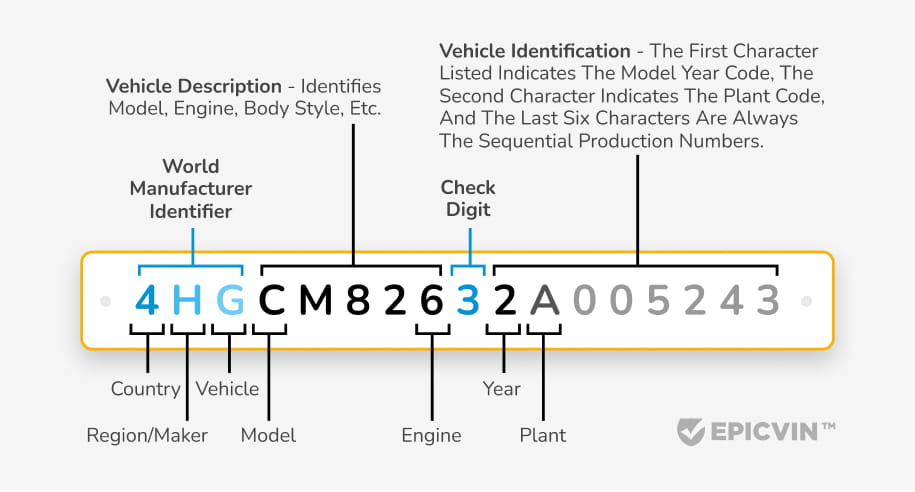This post contains affiliate links. If you click on a link and make a purchase, we may earn a commission at no additional cost to you.
In the vast world of automobiles, every vehicle has its own unique story to tell. Behind the glossy exterior and powerful engine lies a wealth of information that defines its origin, specifications, and history. One of the most essential documents for any Jeep owner or enthusiast is the VIN (Vehicle Identification Number) build sheet. In this comprehensive guide, we will dive deep into the world of Jeep VIN build sheets, understanding what they are, how to decode them, and the invaluable insights they provide about your cherished Jeep.
Understanding the VIN: A Vehicle’s Fingerprint: The VIN, akin to a vehicle’s fingerprint, is a 17-character alphanumeric code that serves as a unique identifier for each vehicle. It holds a treasure trove of information about the car’s make, model, engine type, place of manufacture, and more. For Jeep enthusiasts, decoding the VIN is akin to unlocking the secrets of their beloved off-road companion.
Breaking Down the Jeep VIN: What Each Character Represents: Before delving into the build sheet, it’s essential to understand the structure of the Jeep VIN. Each character in the VIN represents specific information about the vehicle. Here’s a breakdown of the typical Jeep VIN structure:

- Characters 1-3: These represent the World Manufacturer Identifier (WMI) and indicate the vehicle’s manufacturer and country of origin. For Jeep, the WMI usually starts with “1J4,” signifying it as a Jeep vehicle.
- Characters 4-8: The Vehicle Descriptor Section (VDS) provides information about the vehicle’s model, engine type, and series. This section gives details about the specific Jeep model you own.
- Characters 9-17: Known as the Vehicle Identifier Section (VIS), these characters provide unique information about the specific vehicle, such as its production number and year of manufacture.
Unlocking the Build Sheet: Decoding the Jeep VIN Build Sheet: The Jeep VIN build sheet is essentially a detailed document that outlines all the specifications of your vehicle as it rolled off the assembly line. Obtaining this build sheet can provide invaluable insights, especially if you’re considering modifications, repairs, or simply want to understand your Jeep’s origins better.

- Contacting the Manufacturer: While older Jeep models might not have digital build sheets readily accessible online, Jeep enthusiasts can often request a build sheet directly from the manufacturer. By providing your VIN and sometimes a small fee, you can receive a comprehensive document detailing your vehicle’s specifications.
- Online VIN Decoders: Several online platforms offer VIN decoding services. By entering your Jeep’s VIN, you can receive a breakdown of its specifications, including engine type, transmission, paint codes, and factory-installed options. These online tools provide a quick and convenient way to access your Jeep’s build sheet.
Few Online VIN Decoders:
Department of Transportation
National Highway Traffic Safety Administration
Driving Tests
AutoZone VIN Lookup
Interpreting the Build Sheet: Unraveling the Details: Once you have your Jeep’s build sheet in hand, it’s time to decipher the information it contains. Here are some key details you might find:
- Engine Specifications: The build sheet outlines your Jeep’s engine type, including the displacement, fuel type, and other pertinent details. This information is invaluable for maintenance and modifications.
- Transmission: Knowing the type of transmission in your Jeep is essential, especially if you’re planning any off-road enhancements or modifications for towing.
- Axle Ratios: The build sheet provides information about the axle ratios, helping you understand your Jeep’s gearing and its off-road capabilities.
- Paint Codes: Want to touch up your Jeep’s paint or customize it to match its original color? The build sheet includes paint codes that ensure a perfect match.
- Factory-Installed Options: From entertainment systems to off-road packages, the build sheet details all the factory-installed options your Jeep came with, giving you a clear picture of its original specifications.
Why the Build Sheet Matters: Unlocking Your Jeep’s Potential: Understanding your Jeep’s VIN build sheet isn’t just about satisfying curiosity; it’s about maximizing your Jeep experience. Here’s why it matters:
- Modifications: If you’re planning modifications, whether it’s upgrading the engine, enhancing off-road capabilities, or even a simple tire change, knowing your Jeep’s original specifications helps you make informed decisions.
- Restorations: For enthusiasts involved in Jeep restorations, having the original build sheet is akin to having the vehicle’s blueprint. It ensures that your restoration efforts are as authentic as possible, retaining the Jeep’s original charm and specifications.
- Resale Value: When it comes to selling your Jeep, having the build sheet can be a significant selling point. Potential buyers appreciate the transparency and the ability to understand the vehicle’s history and specifications.
- Ownership Satisfaction: Knowing your Jeep inside out enhances your ownership satisfaction. You’ll have a deeper connection with your vehicle, appreciating its nuances and capabilities more fully.
In Conclusion: The Jeep VIN Build Sheet—A Gateway to Your Jeep’s Story: The Jeep VIN build sheet is more than just a document; it’s a gateway to your Jeep’s story. It allows you to connect with your vehicle on a deeper level, appreciating its engineering, heritage, and capabilities. Whether you’re a seasoned off-road enthusiast, a restoration aficionado, or a proud new Jeep owner, accessing and understanding your Jeep’s build sheet is an empowering experience.
So, the next time you get behind the wheel of your Jeep, remember that it’s not just a vehicle; it’s a legacy with a unique identity waiting to be explored, one VIN digit at a time.
This post contains affiliate links. If you click on a link and make a purchase, we may earn a commission at no additional cost to you.
























